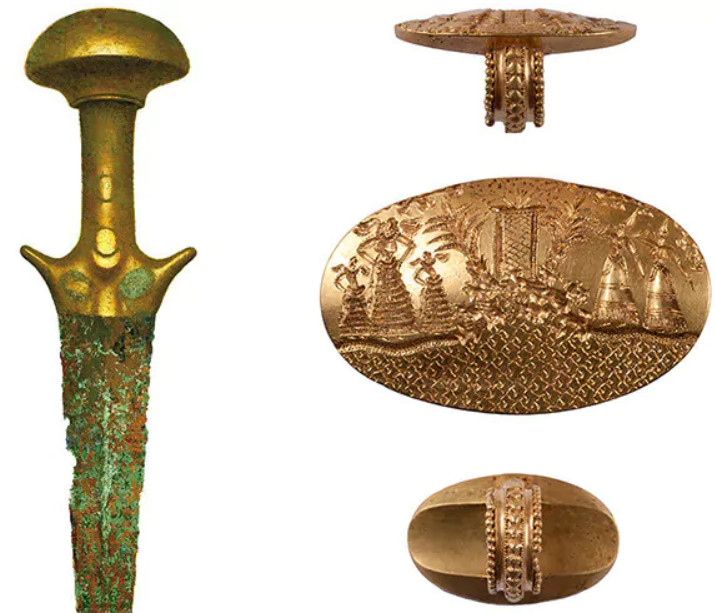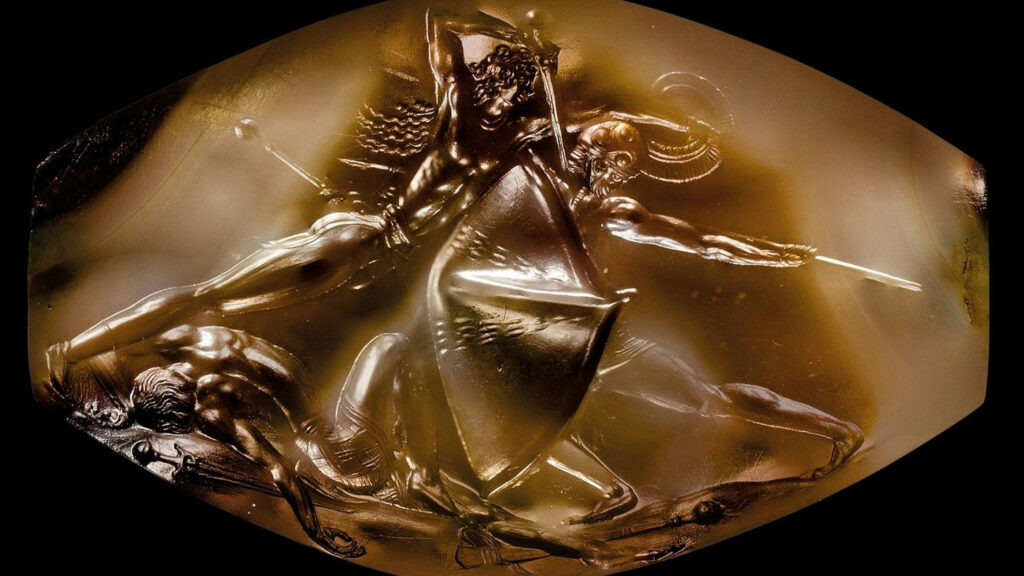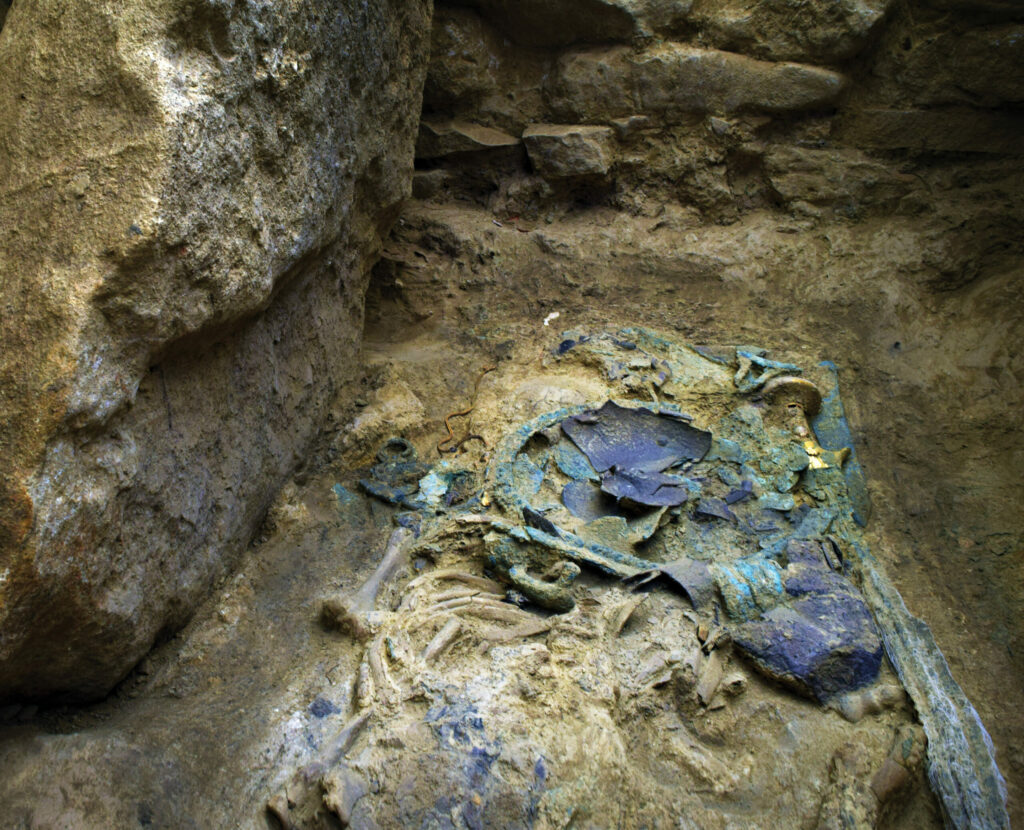The discovery that captivated the archaeological world
In 2015, a remarkable discovery in Pylos, Greece, captivated the archaeological community. Excavations uncovered the tomb of a warrior dating back to around 1450 BC, now known as the “Griffin Warrior.” Among the numerous artifacts found in the tomb, one stood out as a testament to the interconnected world of the Aegean Bronze Age—a bronze sword adorned with a beautiful gold hilt.
Minoan hallmark: Iconic horned sword hilt
The design of the sword was immediately compared to the iconic swords of the Minoan civilization, a sophisticated culture that flourished on the island of Crete. A prominent feature of Minoan weapons was the distinctive “horned” hilt, with protrusions at the base that formed a protective shield for the warrior’s hands. This unique design was common in Minoan art and archaeological finds across the island, a sign of their unparalleled metalworking skills.

Pylos Combat Agate: An Immortal Warrior
Adding to the intrigue, a small but incredibly detailed sealing stone known as the Pylos Combat Agate was discovered alongside the Griffin Warrior’s remains. This intricate carving depicts a fierce battle scene, with a warrior – perhaps the Griffin Warrior himself – wielding a sword that bears an uncanny resemblance to the horn-hilted Minoan sword found in the tomb.

Decode the connections
The presence of a Minoan-style sword in the Mycenaean warrior’s tomb and its depiction on the Pylos Combat Agate indicate deep cultural connections between these two civilizations. Several possibilities arise:
- The Griffin Warrior himself may have been of Minoan origin, bringing with him the traditions and weapons of his homeland.
- He may have acquired the sword through trade, war, or admiration for Minoan craftsmanship, reflecting the exchange of goods and ideas across the Aegean Sea.
- The sword may have symbolized the warrior’s status and prestige, as finely crafted weapons were coveted symbols of power during the Bronze Age.

Tales of Warriors and Craftsmen
Beyond its archaeological implications, the Griffin Warrior’s Sword says a lot about the interconnectedness of the Aegean world during the Bronze Age. It reminds us that even in ancient times, civilizations were not isolated entities but part of complex networks of cultural exchange, where the skills of warriors and craftsmen crossed borders and influenced each other.

As we continue to uncover the mysteries of the past, the enigmatic Griffin Warrior sword is a testament to the enduring human desire for craftsmanship, prestige, and the preservation of cultural heritage through remarkable artifacts. This fascinating discovery has opened a window into the vibrant and interconnected world of the Aegean Bronze Age, and the story of the sword continues to fascinate scholars and the public alike.

Conclusion: Preserving the Legacy of Griffin Warrior
The Griffin Warrior’s sword is more than just an archaeological relic – it is a tangible link to the past, a testament to the cultural exchange and artistic talent that shaped the Aegean Bronze Age. As we delve deeper into the mysteries surrounding this remarkable find, we are reminded of the importance of preserving and studying such artifacts, for they hold the power to shed light on the rich tapestry of human history.
Through continued research and public engagement, the legacy of the Griffin Warrior and his mysterious sword will endure, inspiring future generations to explore the interconnected worlds of the ancient past and the lasting impact of cultural exchange.


